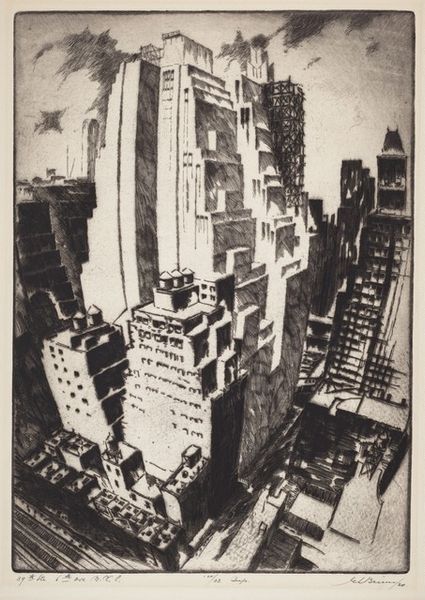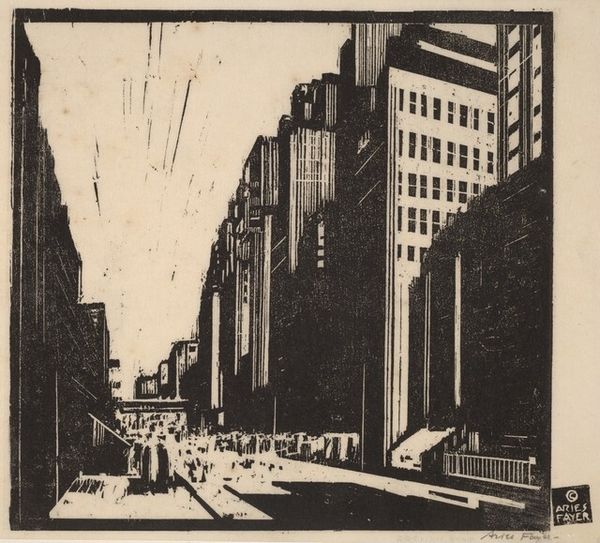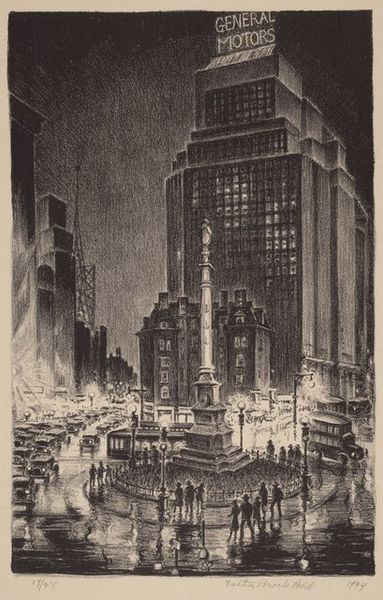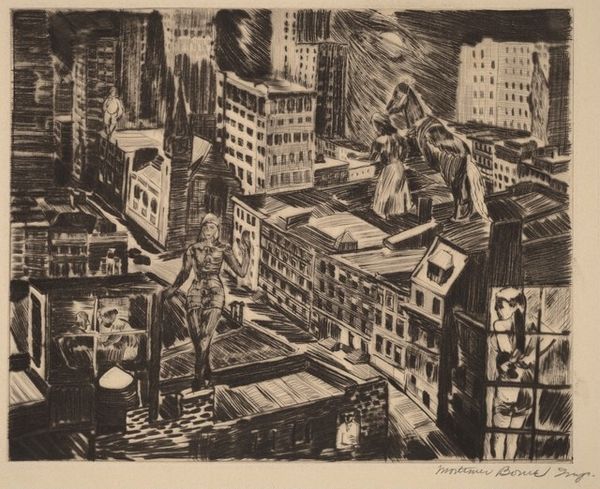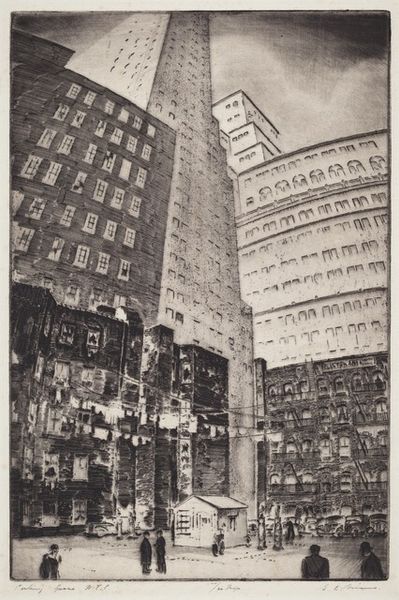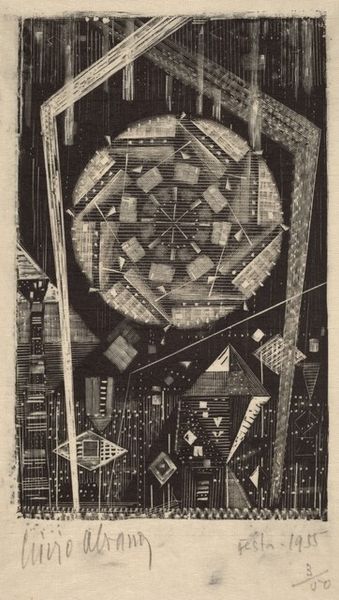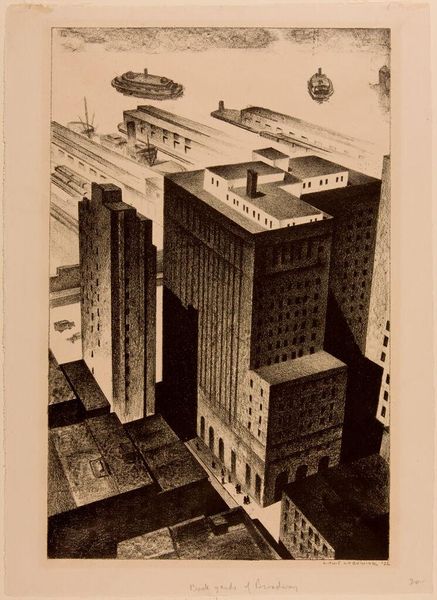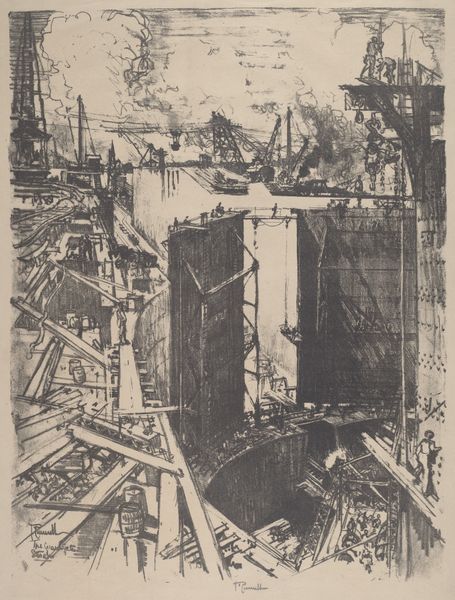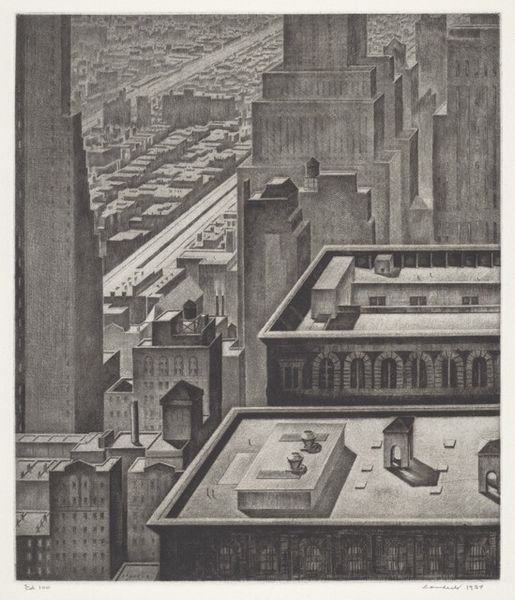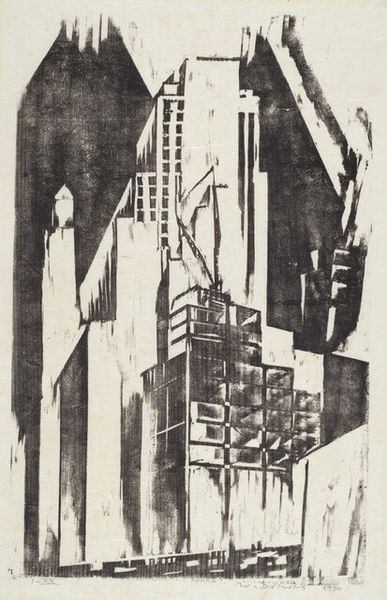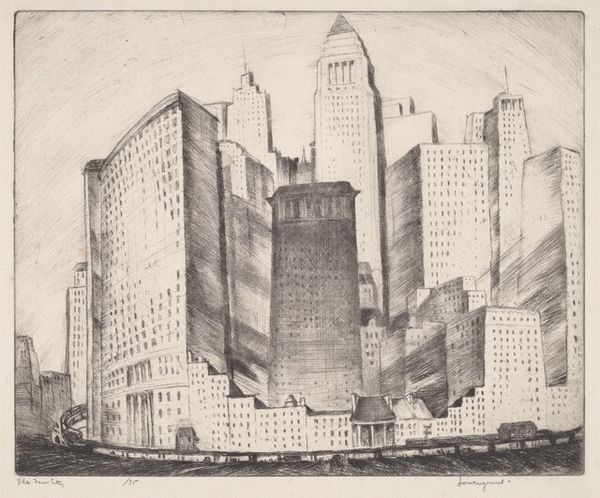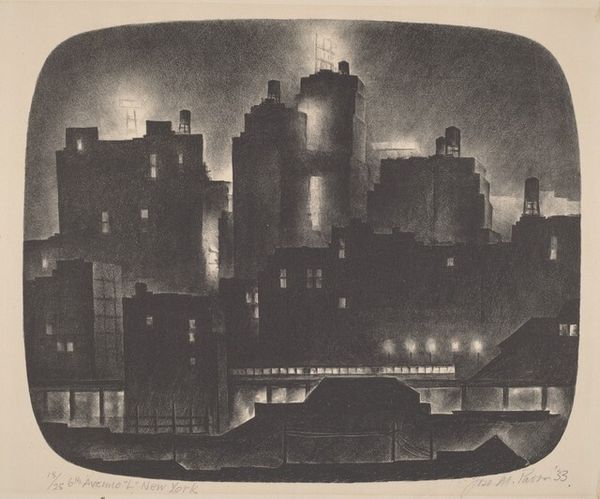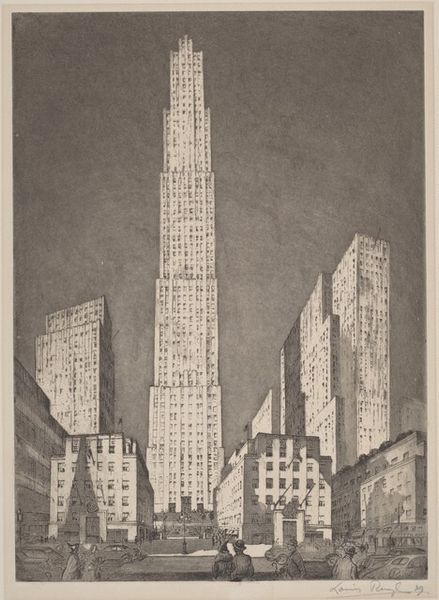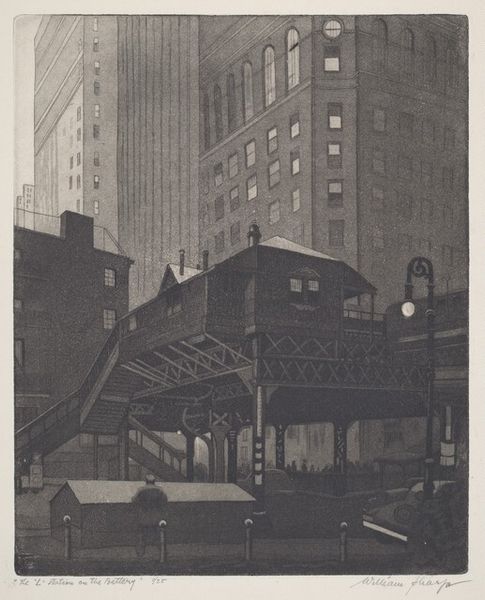
drawing, print, graphite
#
art-deco
#
drawing
# print
#
charcoal drawing
#
graphite
#
cityscape
Dimensions: image: 210 x 318 mm sheet: 273 x 410 mm
Copyright: National Gallery of Art: CC0 1.0
Curator: Helen Green Blumenschein's "Times Square" from 1940, created with graphite and charcoal, presents an evocative snapshot of a pivotal moment in American history. Editor: It has this somber, almost ghostly quality. The charcoal and graphite seem to mute the vibrant energy you'd expect from Times Square, turning it into something… haunted, maybe? Curator: It's interesting you say haunted. Given that this was created right before America fully entered World War II, there's a palpable tension, an undercurrent of anxiety that permeates the scene. The looming architecture, the muted palette – it reflects a society on the precipice of enormous change. Editor: And what about the choice of materials? The print feels significant. This isn’t an oil painting destined for a wealthy patron’s home. A print suggests wider dissemination, reaching more people, perhaps reflecting the widespread social experience of this era. Graphite and charcoal – such common materials elevated here. Curator: Absolutely. Blumenschein likely chose these mediums for their accessibility, echoing the everyday experiences of people living through that period. Think of the Depression, still a fresh wound. The concentration of commercial messaging contrasts starkly with the scarcity many were still facing, which feels intentional. Editor: The way she renders the advertisements – the Camel cigarettes, Planters Peanuts – also speaks volumes about consumer culture and its pervasiveness, even during a time of global upheaval and impending national sacrifice. The architecture dominates; we're drawn upwards by it, yet those little spots of light indicating crowds, of ordinary human life below are quite intriguing. I can't help but feel that there are questions that still ring true today about power, class, and whose stories are at risk of being swept away into the fabric of the city? Curator: A prescient point. There is an intrinsic paradox between public spectacle and personal experience – mass media as a filter for life, particularly during a tumultuous era. Looking at the relationship between art deco's legacy of grand optimism, with what became a period defined by social realism, can illuminate not only art but provide critical social analysis, too. Editor: Looking at it again, what really stays with me is her method. The very making, from mark-making with the graphite, embodies that tension we're speaking of. Each pass highlights not a surface finish but evidence of a process to produce what the world at the time needed: readily-available and insightful documents of collective existence, as an entire nation wondered if what lay behind, and what was on the horizon would destroy all the hopes held so preciously within them. Curator: A profound observation. It becomes clear when revisiting it now that this seemingly simple drawing acts as an accessible portal to an incredibly fraught chapter in American consciousness.
Comments
No comments
Be the first to comment and join the conversation on the ultimate creative platform.
